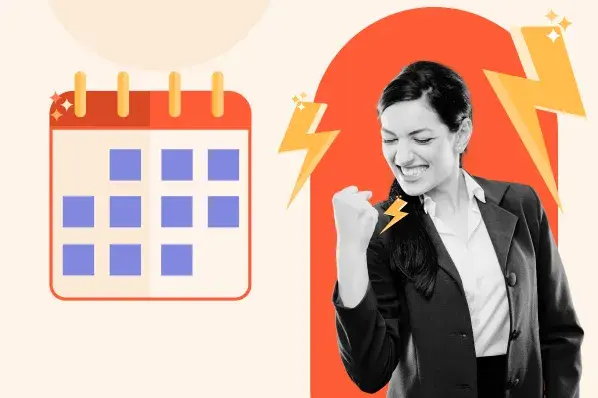
I still remember the first cold call that truly humbled me.
Not the first one I ever made — that one was bad, sure, but I was too naive to realize it. I’m talking about the first call where I thought I was prepared. I had the script and the pitch — and even their LinkedIn open. And still … the moment they picked up, I choked.
The decision-maker — a VP at a growing tech firm — answered with a skeptical “Hello,” and I launched into my opener. Within 20 seconds, he cut me off with a polite but firm, “Diego, I’m going to stop you right there. I don’t take cold pitches.” Click.
Now, I could’ve blamed him. I could’ve said, “He just wasn’t open” or “He doesn’t get it.” But the truth was: I wasn’t relevant. I was talking at him, not to him. That call taught me one of the hardest truths in sales:
No one owes you their attention. You earn it — word by word.
Since then, I’ve made thousands of cold calls to everyone from Fortune 500s to seed-stage startups. And I still believe in cold calling. Not because it’s easy, but because it works if you respect the craft. And that’s where most reps — even smart, well-intentioned ones — mess up. They treat cold calls like interruptions instead of opportunities. They either ramble through a script that sounds like it was written in 2009, or worse, they wing it, hoping personality alone will land the meeting.
That’s not how you sell in 2025. And that’s not how I coach my clients — or run my own pipeline. So this post? This isn’t theory. It’s a field-tested, experience-backed guide on how to cold call in today’s sales environment — using real-world scripts, updated stats, and strategies I’ve battle-tested across industries.
So if you’re tired of relying on luck, scripts that feel stale, or openers that go nowhere, this guide is for you.
Let’s break it all down.
Table of Contents
What is cold calling?
Cold calling is one of those terms that instantly sparks debate in sales circles. Some see it as outdated. Others treat it like a badge of honor. Me? I see it as a high-skill, high-resistance channel that, when done right, can still open more doors than most people give it credit for.
At its core, cold calling means picking up the phone and starting a sales conversation with someone you’ve never spoken to before. No email warmup. No mutual connection. Just you, a phone, and a shot at capturing attention in the first 30 seconds.
Sounds brutal, right? That’s because it is — when you treat it like a numbers game. But when you approach it like a craft? That’s when cold calling becomes a strategic weapon.
In this article, you’ll learn:
- Why cold calling still works — and when it doesn’t.
- How to structure your calls for impact, not just activity.
- What to say in the first 15 seconds (and what not to).
- The exact scripts I’ve used to book meetings with VPs, founders, and buyers who “don’t take cold calls.”
- How to handle rejection, objections, and gatekeepers with empathy and control.
Why Most Cold Calls Fail (and What I Learned From Bombing My First 100)
I’ll be honest: My first few months of cold-calling were a bloodbath. I was dialing dozens of strangers a day with nothing but a generic pitch and a tight smile. I was told to “just push through the no’s.” But no one told me how to turn those no’s into opportunities.
Eventually, I stopped reading scripts like a robot and started thinking like a strategist. That’s when everything changed. Because cold calling isn’t about pushing a product. It’s about creating relevance fast enough to earn trust — and a few more minutes of someone’s time.
Over the years, I’ve learned to treat cold calling like chess, not checkers. It’s less about what you say and more about how quickly you can meet the prospect in their mental context. That’s where the magic happens.
Yes, cold calling still works — and the data proves it.
Let’s clear something up: Cold calling isn’t dead. Far from it.
According to RAIN Group’s 2023 report, live phone conversations remain one of the top five most effective prospecting tactics. And Cognism’s latest data shows that cold calling conversion rates doubled from 2% to 4.82% over the past year. That’s a 140% improvement. Why?
Because fewer reps are doing it well, which means there’s less noise and more space for those who know how to stand out.
Even Gong found that when a rep follows up a cold call with an email, reply rates increase from 1.81% to 3.44%. That’s a 90% lift — just by pairing the phone with another touchpoint. In other words, cold calls amplify your outbound motion. They don’t exist in isolation — they multiply your reach.
The Real Definition of Cold Calling (From Someone Who’s Done It for Years)
Forget the textbook version. Here’s how I define cold calling today:
Cold calling is the art of starting relevant conversations at scale — with people who don’t know you but need what you offer.
And I say “art” intentionally. Because this isn’t just about dialing. It’s about pattern recognition, emotional intelligence, timing, and confidence. It’s about knowing when to press, when to pause, and when to pivot.
Great cold callers don’t just pitch. They provoke curiosity. They show up with clarity, not desperation. And most importantly, they treat every call like a conversation worth having — even if it doesn’t convert right away.
You don’t win on charm. You win on clarity.
You don’t close with pressure. You close with precision.
And above all, you don’t improvise your way into trust. You prepare for it.
Cold calling is still the fastest path to real-time feedback.
Here’s something most playbooks won’t tell you: Cold calling isn’t just about lead generation. It’s about insight generation.
Every call gives you live, unfiltered feedback on your messaging, your positioning, your timing, and your tone. There’s no faster way to pressure-test a new value proposition than saying it out loud to 50 strangers. And if your pitch survives that, trust me — it’ll survive anything.
That’s why I tell every founder, SDR, and marketer I coach: Cold calling is a diagnostic tool, not just a sales tactic. If you’re struggling to get traction in the market, pick up the phone. You’ll learn more in three hours than in three months of passive research.
Cold calling isn’t dead — lazy cold calling is.
Cold calling isn’t dead. Let me be clear about that. The data doesn’t lie — and neither does the pipeline. Done well, a cold call can still be the fastest way to book a high-value conversation with a C-level decision-maker. But what’s dead is the old way of doing it. The robotic pitches. The generic “Did I catch you at a bad time?” openers. The fake rapport.
If you’re still treating cold calls like a volume game, it’s no wonder they’re not working. Today’s prospects can smell a spray-and-pray pitch from a mile away. But when you come in with intent, context, and empathy? You’re no longer an interruption. You’re a signal.
Cold calling isn’t for everyone. It’s uncomfortable. It’s unpredictable. And it forces you to get better — or get off the phone. But that’s exactly why I still do it. Because in a world of templated emails and automated sequences, the fastest way to build trust is still one-to-one conversation.
And that starts with the courage to dial.
Why is cold calling done by sales professionals?
There’s something brutally honest about cold calling. No marketing fluff. No nurture flow. Just a conversation between two humans — one with a solution, the other with a problem they may not know they have yet. That’s why I still believe cold calling is one of the purest, fastest, and most revealing channels in sales.
So, why do sales professionals keep cold calling in 2025, even with AI tools, inbound funnels, and automated sequences at our fingertips?
Simple: Because it works when done right, and no other channel gives you real-time feedback at scale like the phone does.
Let me explain.
1. Cold calling creates conversations at scale.
I’ve run outbound campaigns for startups, agencies, and enterprise firms. And no matter the tech stack — email, LinkedIn, chatbots, carrier pigeons — phone calls consistently bring in 20–30% of our qualified conversations when executed with skill and precision.
And the data backs that up.
According to Cognism’s 2024 Cold Calling Report, the average conversion rate for cold calls has jumped to 4.82%, up from 2% just a year prior. That’s a 140% increase — because reps who stuck with it got sharper while others gave up too soon.
And cold calls don’t exist in isolation either. Gong’s research shows that a phone call before or after an email doubles the response rate. When the voice and the inbox work together, you build recognition and trust.
I’ve seen this firsthand. When my SDR team leads with a well-researched cold call, even if it goes to voicemail, our reply rates on follow-up emails consistently jump by 60–70%.
2. The phone forces relevance (and rewards preparation).
Cold calling isn’t about spamming a list. It’s about showing up with context and conviction. That’s why sales professionals still do it — it forces them to get closer to the customer.
Here’s the thing most people miss: Cold calling reveals in seconds whether your message lands or not. There’s no hiding behind a clever subject line. If your offer is unclear, irrelevant, or misaligned, you’ll know instantly — because the prospect will hang up.
But that feedback loop is gold.
When I want to test a new positioning statement, I don’t start with a landing page. I start with 50 calls. Because the phone doesn’t lie.
As Jason Bay, founder of Outbound Squad, says, “Cold calling is the only sales channel where you get instant rejection, instant validation, and instant improvement. That’s why it’s still a core skill — because the best sellers crave that level of feedback.”
I couldn’t agree more.
3. It builds muscle where it matters: Objection handling.
Want to see if your sales team has real selling skills? Don’t look at their email templates. Listen to their cold calls.
In cold calls, there’s no time to Google a rebuttal. You either know how to de-escalate resistance, reframe the objection, and guide the conversation forward — or you don’t.
I’ve trained hundreds of reps, and nothing accelerates learning like cold call roleplays. It sharpens the reflexes you need to succeed at every other stage of the funnel. If you can handle “We already have a vendor” live, you’ll crush it in a discovery call.
And there’s a mindset shift here, too. Cold calling teaches you not to fear rejection, but to expect it. That kind of psychological resilience turns reps into closers.
4. It reaches buyers that other channels miss.
Let’s be honest: Inboxes are overcrowded. LinkedIn DMs are flooded. Social feeds are noisy. But phones? Still underutilized.
When I target VPs and C-level execs in more traditional industries — construction, logistics, finance — cold calling isn’t just effective. It’s often the only way to cut through.
These are people who don’t scroll through newsletters all day. But they will answer a direct, relevant call if it sounds like someone who did their homework.
And when you do get through? The conversion path is faster. I’ve booked meetings with CFOs in under 60 seconds on the phone — meetings that would’ve taken 12 touchpoints over email.
5. Cold calls sell the next conversation.
I’ll say something controversial: A cold call is not about discovery. It’s about selling the next step.
I’m not trying to solve the whole problem on the first call. I’m trying to earn the right to go deeper. That means positioning the meeting, not the product.
The reps who succeed don’t ask 10 questions. They create urgency. They show a glimpse of value. They make it easy to say “Yes” to 15 more minutes.
Here’s how I like to frame it: Cold calls are like movie trailers. You’re not selling the whole film — you’re selling the seat in the theater.
If you focus the call on why now, not what we do, your meeting book rate will jump.
6. Cold calling isn’t dying. It’s evolving.
Cold calling isn’t outdated — it’s misunderstood.
The reason sales professionals still do it is because it’s fast, measurable, and brutal in the best way. It exposes bad messaging. It builds stronger reps. And when layered with smart outbound systems, it fuels pipeline like no other channel can.
I don’t cold call because I like rejection. I cold call because it builds skill, character, and revenue. And when those three things align? You’re not just dialing numbers. You’re driving growth.
How to Cold Call
Research like a sniper, not a tourist (AKA Why I never pick up the phone without context).
When I first started cold calling, I used to dial with a mix of nervous energy and hope. I thought enthusiasm could make up for a lack of context. It didn’t. I burned through good leads by winging it. What changed everything for me was treating each call like a micro-campaign, not a shot in the dark.
Before I call anyone, I dig. I look into the person, the company, the tech stack, their latest product launch, and even who they’ve recently hired on LinkedIn. I check if they raised a round, expanded into a new market, or just got regulatory approval.
Why? Because when I say something like “I saw you just rolled out usage-based pricing — curious how that’s impacting your onboarding funnel,” the tone of the conversation instantly shifts. It tells them: I did my homework. I’m not here to pitch you. I’m here to help you think.
Buyers don’t hang up on relevance. They hang up on scripts that sound like they could be sent to anyone.
Build a script you can improvise with — not one you’re shackled to.
I used to think sales scripts were for robots. But then I realized something: The best jazz musicians master their scales so they can break the rules. Same thing in sales.
I write and rewrite my cold call scripts like I’m tuning a performance. I don’t read them line by line — I internalize the flow. I map out objections before they come. I pre-frame my CTA so it feels like a natural next step, not a jump scare. I even rehearse awkward silences so I don’t panic when they happen.
The goal is never to sound scripted. It’s to sound prepared. Confidence on a cold call doesn’t come from personality — it comes from repetition. And a great script is the foundation that lets your personality shine through.
Lead with something they just did, not something you want to do.
One of my highest-converting cold opens ever started with: “Saw your CEO talking about expansion into LATAM on a podcast last week. I work with similar companies post-expansion to help sales teams localize without losing momentum — is that something on your radar?”
That line got me a meeting, but more importantly, it earned respect. Because relevance is earned, not assumed. I always try to anchor my opening in something timely: a recent blog post, a market shift, a customer announcement, a tech stack addition. It shows that I’m not interrupting — I’m aligning.
Most cold calls fail in the first 15 seconds. Mentioning something specific, recent, and relevant is your best chance to beat the default reflex of “Sorry, not interested.”
Don’t fear rejection anymore.
Rejection used to hit me hard. Now, it teaches me. I track not just the “no’s,” but the why behind them. Did I come in too strong? Was the timing off? Did I fail to personalize? Every rejection carries a clue.
I’ve been hung up on mid-sentence. I’ve had prospects who sounded annoyed just to be breathing the same air as a sales rep. That used to rattle me. Now, I take a breath, reset, and move on. Because rejection isn’t personal — it’s data. The sooner you embrace that, the faster you grow.
You’re not trying to win every call. You’re trying to win the right ones — and that means powering through the wrong ones without losing your rhythm.
Time your dials like a trader watching the market.
Cold calling isn’t just about what you say — it’s about when you say it. I’ve tested every time slot imaginable, and here’s what’s worked best for me: mid-morning (between 10:00–11:00 AM) and late afternoon (4:00–5:00 PM), in the prospect’s local time.
But timing goes beyond the clock. I also look at company events. Did they just hire a new VP of sales? Did they attend a trade show? Did they roll out a new product? These aren’t just news items — they’re openings.
When you call during transition points — moments where decisions are being made — you become part of that decision-making process. Time it right, and you’re not cold calling. You’re showing up exactly when they need you.
Open with the reason you’re calling, and say it with clarity, not as an apology.
If there’s one thing that’s helped me earn time on a cold call, it’s getting straight to the point. My go-to line? “The reason for my call is simple…” Then I tie it directly to a challenge I believe they’re facing or an outcome they want.
No fluff. No fake rapport. Just clarity.
Gong’s data backs this up — calls that start with a clear reason are 2x more likely to lead to positive outcomes. And from my own calls? I’d say the difference is even greater. Executives respect decisiveness. They don’t want you to charm your way in. They want you to respect their time and make it worth their attention.
Turn cold calls into mini work sessions — not pitches.
This one took me years to learn: Cold calls that feel like one-way pitches die fast. Cold calls that feel like two-way problem-solving sessions? That’s where the magic happens.
When I started adding interactivity — like sharing a quick stat, asking for a reaction, or referencing something on their site — the engagement shifted. They weren’t just listening; they were thinking with me.
Now, I try to make every cold call feel like a mini working session. Even 90 seconds of real thought partnership creates momentum. Prospects don’t remember salespeople. They remember the moments when someone helped them think differently.
Sell the next step, not the whole vision.
Here’s the mistake I made early on: trying to sell the whole deal on the first call. That’s too much, too soon. Cold calls aren’t for closing. They’re for opening.
My only goal on a cold call is to sell the next step — usually a 20–30 minute discovery call. That’s it. I don’t drown them in features. I focus on value alignment, timing, and curiosity. If they feel intrigued and see potential, I’ve won.
It’s like dating — you’re not proposing on the first meeting. You’re asking for a coffee.
Use every call as a rehearsal for the real thing.
Every cold call I make is a chance to get sharper. I track my opener’s conversion rate. I test CTAs. I log objections and build responses that feel natural, not rehearsed. Over time, my script becomes a living system, not a static doc.
I also record and review my calls weekly. Yes, it’s awkward. But it’s the fastest way I’ve improved. Think of it as game tape. The greats in sports study every play. Great sellers do too.
Warm up your mindset before every cold call (because confidence starts before the dial tone).
Most reps jump straight into the dialer cold — no prep, no pause, just blind hope and hustle. I used to do the same. I’d burn through a list, chasing volume, thinking the sheer number of calls would compensate for the lack of intention behind them.
But here’s the truth I learned the hard way: Cold calling isn’t just a mechanical task — it’s an emotional performance. And like any performance, it requires a warm-up.
Before I make my first call of the day, I run a short mental routine: I revisit wins from the previous week. I read a testimonial. I pull up a Slack message from a client who closed. I remind myself why I believe in what I’m selling and who it actually helps. That shift alone puts me in a proactive, not reactive, state of mind.
Because when you’re dialing from a place of belief, not burnout, people hear it. Your tone changes. Your pacing improves. Your questions land better.
This isn’t fluff. It’s foundational. Cold calling is 70% mental and 30% tactical. If your mindset’s off, no script in the world can save you.
So, before you hit “Call,” hit reset on your head. Your pipeline will thank you for it.
Cold calling isn’t dead — it’s just misunderstood.
I’ve heard it all: “Cold calling doesn’t work anymore,” “Buyers don’t answer phones,” “It’s better to automate everything.” And yet, the reps I coach who hit quota month after month? They still cold call. I still cold call.
Because here’s the truth: Cold calling does work when you do it with precision, intention, and empathy.
Over the years, I’ve learned that it’s not about having a golden script or some magic opener. It’s about showing up prepared. It’s about doing your homework, leading with relevance, and having the confidence to steer a real conversation, not just pitch a product. Because cold calling isn’t about being perfect; it’s about being prepared enough to stay human under pressure.
Some of my best clients — the ones that turned into multi-year partnerships — started with a single cold call. One rep. One shot. One thoughtful opener. That’s the power we hold when we treat cold calling like a craft, not a chore.
I don’t cold call to sell a product. I cold call to solve a problem. I cold call to earn trust. And when I do that well, the sale usually follows.
So if you’ve been hesitating to pick up the phone, here’s my challenge to you: Shift your mindset. Use the script as a compass, not a cage. Take rejection as a signal, not a verdict. And most importantly, remember that every dial is a chance to make someone’s day better, including yours.
That’s what real cold calling looks like. Not robotic. Not desperate. Just human. And effective.
You in?
Editor’s note: This post was originally published in February 2016 and has been updated for comprehensiveness.
![]()



![How & why to use sales scripts [+ 14 examples and templates]](http://nurseagence.com/wp-content/uploads/2025/07/sales-script-examples-hero-425x283.webp)


![Free Resource: 30 Sales Call Script Templates [Download Now]](https://no-cache.hubspot.com/cta/default/53/64e5789a-605c-4e14-90d9-8aa3df310ee1.png)






